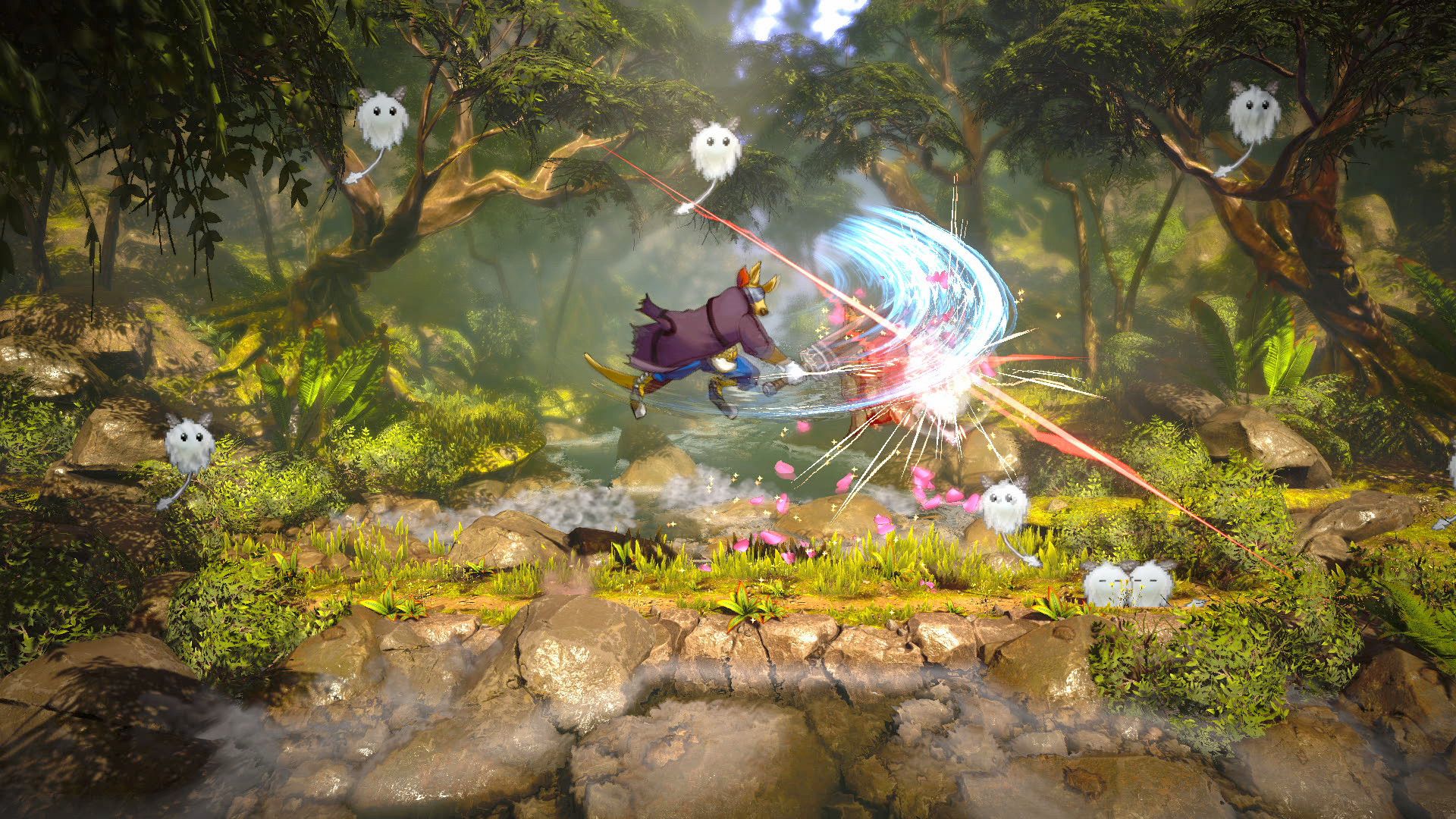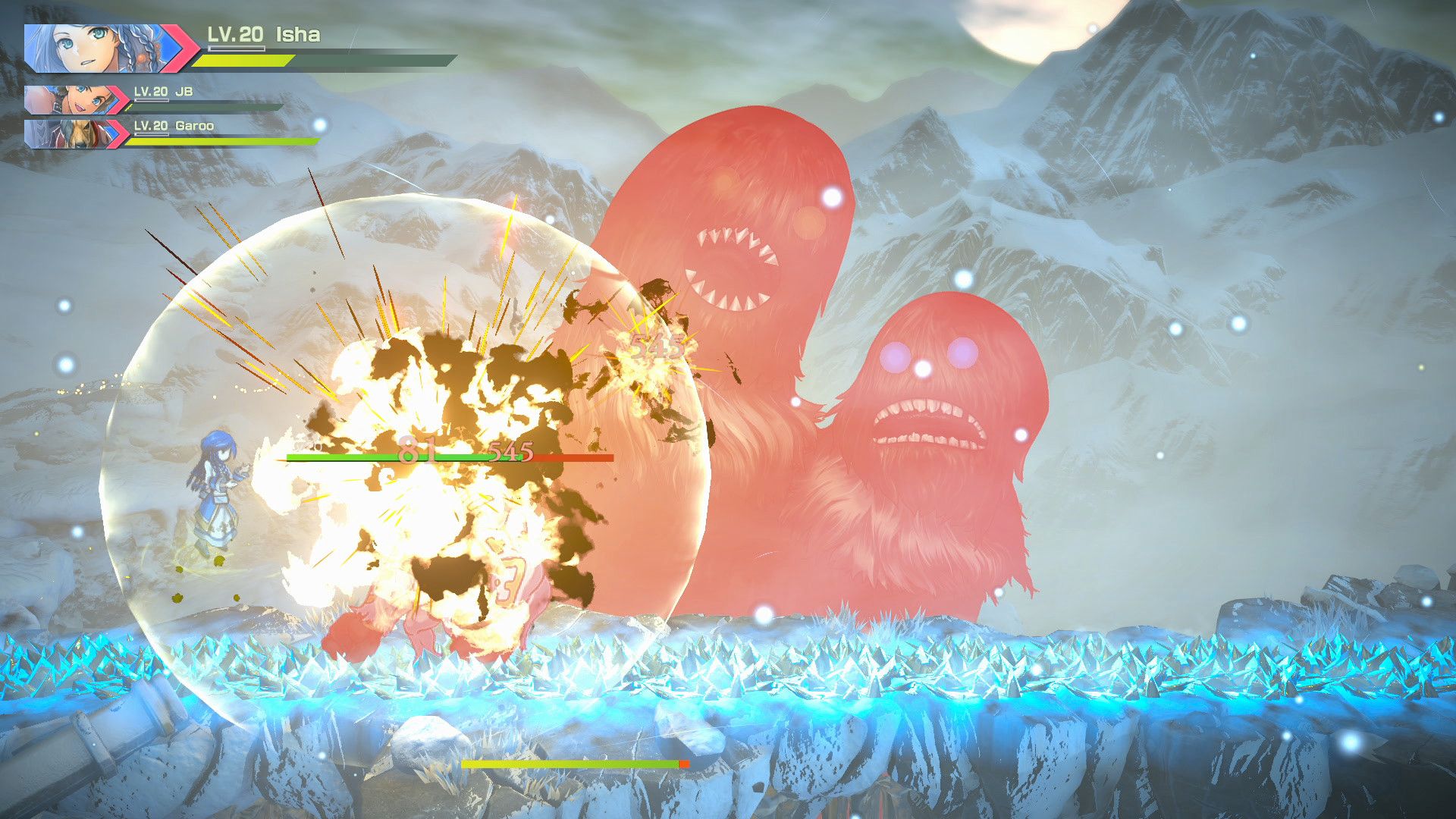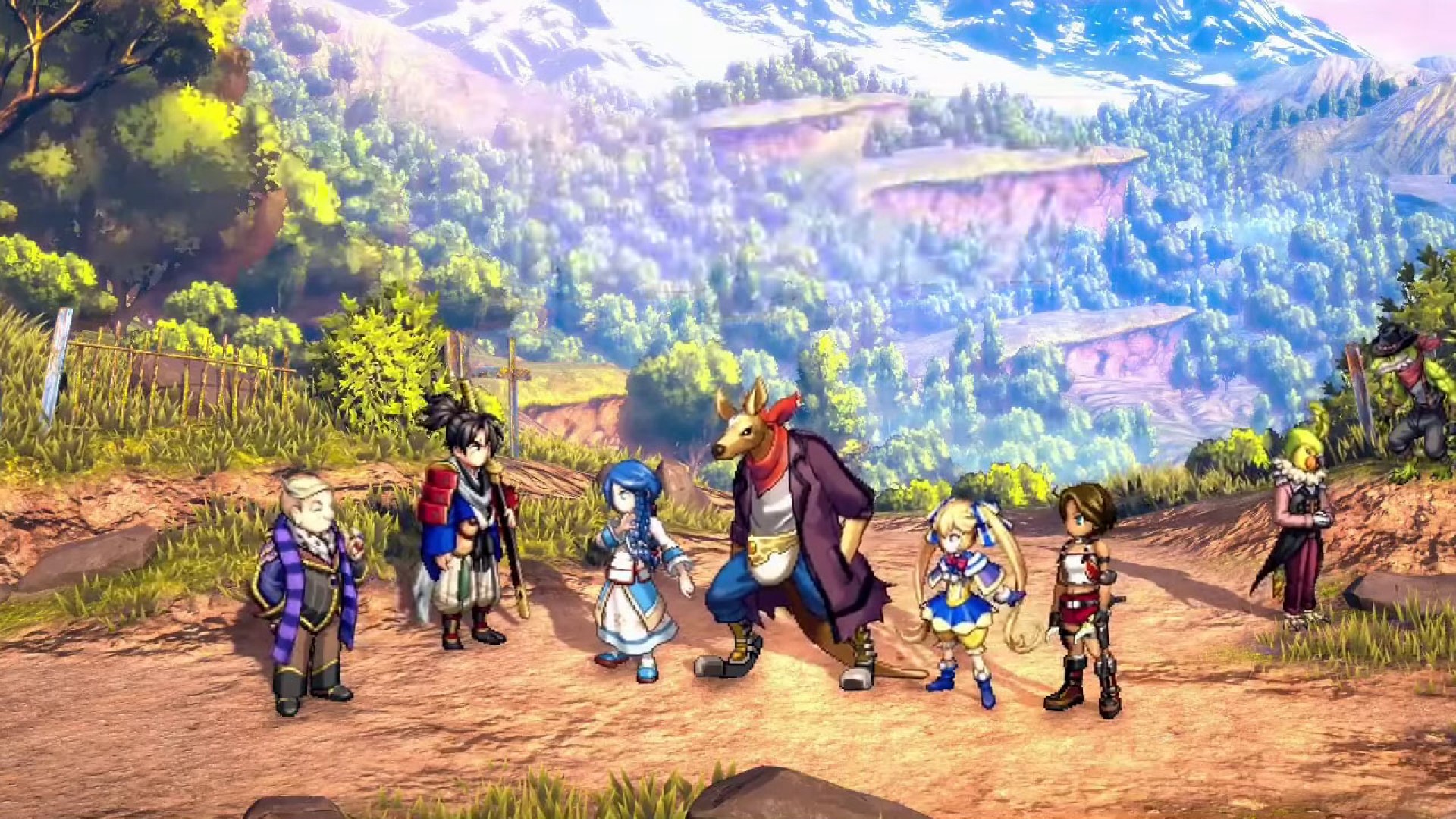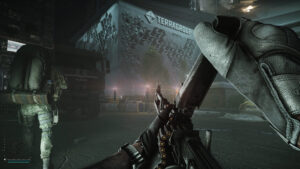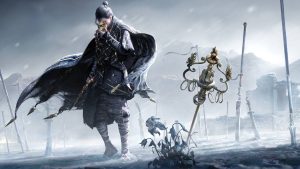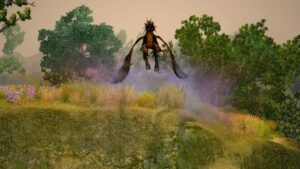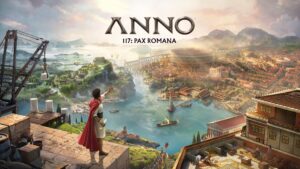
Upon its announcement, Eiyuden Chronicle: Rising was placed in an interesting position. It’s billed as the “companion prequel” to Rabbit and Bear Studios’ upcoming Eiyuden Chronicle: Hundred Heroes – the predecessor to a Suikoden spiritual successor. As such, Natsume Atari is in charge of development here and the overall structure is vastly different. Instead of strategy and turn-based battles, this is a side-scrolling action RPG with town-building elements. But it also has multiple playable characters, some platforming, a fairly hefty narrative and a few “activities” like fishing.
There’s a decidedly retro-esque simplicity to it all, which is aided by one of the game’s best features – the visuals. The 2D character designs are distinct while the 3D environments (presented in 2.5D perspective) are crisp with nice texture work and lighting. There is a slight roughness to character outlines and their animations, both in and out of combat, can be somewhat stiff. This reinforces the retro aesthetic all the more but also takes some getting used to. Even the music carries a cheerful tune in town when it’s not mysterious and/or dangerous in the game’s various caves (though it can get a bit one-note at times).
"Oftentimes, you’ll get requests that necessitate revisiting The Great Forest and The Quarry to gather materials or slay fiends and recover items for the townsfolk."
The story takes place in New Nevaeh, situated in the remote frontier of Allreach. Mysterious earthquakes have caused Runebarrows to emerge near the town’s Quarry. Precious treasure, like Lenses, are waiting to be found but there’s also a number of monsters and fiends to contend with. The town’s already in a state of disrepair due to the earthquakes and the influx of adventurers seeking a fortune doesn’t really help. You initially begin with CJ, an earnest scavenger who’s left home to make a name for herself.
Upon meeting Isha, the town’s acting mayor, CJ embarks on a quest to…save someone’s cat. And also patch someone’s roof. And also gather materials to fix the clock tower. But eventually, eventually she obtains an Adventurer’s License and teams with a mysterious mercenary named Garoo to investigate The Quarry. But eventually, they get side-tracked into even more tasks.
The town-building and upgrading aspect will occupy a fairly big chunk of your time. Completing requests for the townsfolk earns Stamps – turning these Stamps into the eventual Trading Post nets rewards. You also get XP, Baqua (the game’s currency) and items while unlocking facilities like the weapon shop, armor shop, blacksmith, Inn, Apothecary, tool shop and much more. There’s a fair bit of stuff to do and materials to collect. Oftentimes, you’ll get requests that necessitate revisiting The Great Forest and The Quarry to gather materials or slay fiends and recover items for the townsfolk.
The requests themselves are all fairly simplistic though. Some require you to simply go somewhere, talk to someone and then return to the quest giver. At times, you learn more about each person’s circumstances. However, you’ll also just as often engage in throwaway conversations. The XP and Baqua makes them worth doing, and I’m not above simple tasks – I just wish there were more intricate side quests to do alongside them, potentially expanding on the world even more.
"While the pacing has its ups and downs, the combat thankfully becomes more involved as time goes on."
Being able to freely talk to anyone in town would have also been nice. Outside of requests and main quests, you can’t just go up to someone and strike up a conversation. Wondering how the prickly old man who you helped to rebuild the clock tower is doing, as he stands there as exasperated as always? You’ll have to keep wondering. Being able to venture inside some of the buildings you’ve helped construct as opposed to accessing their services via a menu outside would have also been nice.
It’s a shame because the dialogue in Eiyuden Chronicle: Rising does shine at times. From Garoo’s arguments with CJ to his utter perplexity at her Stamp obsession, there are some genuinely well-written lines and interactions. But they’re also marred by start-and-stop pacing.
One minute you’re seemingly ready to investigate the Runebarrows and the next, you’re completing main quests to help the farm or retrieving a Whetstone. There are some interesting stories to be had, especially when it comes to the struggles that drive CJ, Garoo and Isha (not to mention the deal with characters Mellore, Gocteau and Hogan). You’ll just have to deal with a lot of fluff interspersed in between.
While the pacing has its ups and downs, the combat thankfully becomes more involved as time goes on. Each party member is tied to a single button press, which allows for quickly tagging them in. On top of unique exploration abilities (CJ can double-jump and clamber while Garoo can smash through boulders), this also enables Link Attacks. Upon attacking, if you tag in another party member at the right moment, they’ll attack immediately and deal more damage. Tag back to the first person and the combo keeps going, racking up more damage. Once you get the timing down, they’re easy enough to execute but not easily spammable since there’s a slight cooldown after the last Link Attack combo.
"However, the overall difficulty of the game tends to hold things back. A few upgrades and most enemies will fall without much struggle."
As you progress deeper into the game, observing different enemies and anticipating their attacks along with knowing their weaknesses becomes key. Shielded enemies are more easily handled by Garoo who can break their defense while CJ is more equipped to tackle airborne foes and Isha is suited for ranged combat. For as simple as it all looks, you can chain together some mean-looking combos and the addition of Elemental attacks with Rune Lenses also adds some depth.
However, the overall difficulty of the game tends to hold things back. A few upgrades and most enemies will fall without much struggle. The boss fights are better since they have more intricate patterns that require dodging, blocking and sending back projectiles. On top of being fairly easy though, there aren’t that many and you’ll spend a good amount of time fighting the same bosses again and again (get used to the Tree Fiend in the Great Forest – you’ll be seeing each other a lot).
Of course, this same backtracking also highlights a weakness with the gameplay aspect. Despite the number of cave settings, levels are fairly distinct whether it’s the calm yet uneasy peace of the Great Forest and lava-filled ruins of the Runebarrows. They’re not that complex in terms of layout though.
Also, while additional areas are unlocked as you progress, it’s not uncommon to have monotone sections with very little by way of hazards, platforming or intriguing secrets, as you hack away at any enemies in your path. I was thrilled to finally return to a Menhir, break through an Elementum Pillar and explore the Runebarrows…only to simply walk through four plain corridors before the next Menhir that teleported us somewhere else. Not even the “new” elemental enemies posed much threat.
"As such, Eiyuden Chronicle: Rising fulfills its purpose, providing a solid if very straightforward experience that may or not make you averse to stamps when it’s all over."
This all sounds like Eiyuden Chronicle: Rising falls short in a number of key areas. And it does but that’s because what’s already here is fairly enjoyable, whether it’s the aesthetics or the mechanics. The controls are responsive and combat has a good sense of impact. The characters are likable with distinct designs and intriguing personalities. Plus there’s a zen-like appeal to simply accruing Stamps and watching any potentially amusing interactions that may occur. It would have also been nice to have more depth in aspects like farming and trapping and fishing as a break from the combat but alas.
In hindsight, “companion prequel” really does best describe Eiyuden Chronicle: Rising. It comes across as the appetizer before the main meal, which unfortunately is a year away. There is an interesting setting here but it feels like the lore, characterization and environments beg for something more than the current scale. Like basically filled outlines for portraits that deserve more passes, accenting and finer details. Perhaps Hundred Heroes will expand on this world even further, delivering on the premise established here.
As such, Eiyuden Chronicle: Rising fulfills its purpose, providing a solid if very straightforward experience that may or not make you averse to stamps when it’s all over. The combat and exploration won’t match up with some of the very best in the genre but it’s easy to get into with a decent amount of depth and some satisfying feedback. Overall, it’s a decent time-waster that may surprise some before they pine for what more could have been.
This game was reviewed on PC.
Colorful and sharp visuals successfully convey the modern retro aesthetic. Enjoyable combat with a suitable amount of depth and options. Fun interactions between characters with an interesting setting and lore. Lots of optional content. Gorgeous environments that feel distinct .
Pacing can be fairly uneven, starting and stopping at key moments. Side content is fairly underdeveloped and samey - you'll be revisiting the same few locations constantly. Low difficulty diminishes the impact of combat as a whole. Levels lack much by way of secrets and extensive routes.









